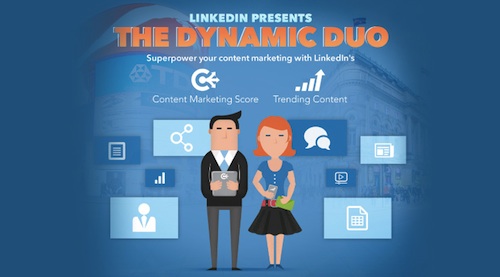This is an interesting little sequence of events here. Follow along:
1. LinkedIn is much better at sending traffic back to your homepage — and thus potential leads — than Facebook or Twitter are. Remember: people go on Facebook to stalk or look at photos. No one really goes on LinkedIn for that. They want ideas about businesses, jobs, leads, best practices, etc.
2. As such, the future of LinkedIn and the future of your brand on LinkedIn are tied back to content, and the creation of relevant content. Consider this: in 2012, content marketing was the leading approach for 18.9% of marketers world-wide. In 2013? It was 35 percent. That’s a 2x jump in 1 year. Why? Because “telling a story” and “voice” matter a lot more in a world with NewsFeeds and mobile and advertisers competing for space, etc.
3. LinkedIn just rolled out a “Content Marketing Score” for businesses, so they can figure out what content is resonating and what isn’t.
4. For a business to really maximize their content strategy on LinkedIn, though, it’s going to mean a lot of their employees will need to be engaged with the platform.
5. But wait … isn’t LinkedIn a place people most actively go when they need jobs? Isn’t it a place where recruiters and headhunters lurk (like you might with photos on Facebook) to find top talent? If you’re telling your people “You need to be active and sharing on LinkedIn to drive leads,” isn’t there a chance that they’ll get poached by someone else as they’re poking away at LinkedIn?
6. Of course there is. And what does that mean? Suddenly, your employee engagement strategy is now really important — because if you’re telling people to spend time on a recruiting platform to drive leads, then you better be damn well certain that all they’re doing on there is driving leads (not entertaining offers). Start thinking differently about how people connect back to organizations, about meetings, and about how to communicate with those at work. Because if you’re going to use LinkedIn for leads — and you should, because it’s 4x more effective — then you need to make sure your top people, while engaging, aren’t also discovering greener pastures.
